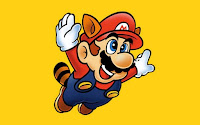Super Mario Bros. 3 is the best NES game,Shigeru Miyamoto, Takashi Tezuka and the team responsible for Super Mario Bros. 3 put all their talent at the service of NES hardware.
A game within the game: including the classic Mario Bros.
Super Mario Bros. 3 was released in Japan on October 23, 1988. Just three years after the original Super Mario Bros. came out in NES.
The development of Super Mario Bros. 3 was carried out by a team of between 20 and 30 people. To see it in perspective, according to Miyamoto, the team of the first Super Mario Bros. was seven or eight people.
Only one person was responsible for the sound design of the entire game. Of course, a legend: nothing less than Koji Kondo.
The game production lasted two and a half years, beginning in spring 1986. It was expected to be completed in two years and a few more months were necessary. Today might seem little for a blockbuster, but that timeframe was huge for the time.
Given the margin of launch between Japan and the United States, where it was put up for sale two years later, many specialized media took advantage by analyzing the Japanese versions of the game.
Despite being finished for years, Nintendo of America did not give Super Mario Bros. 3 a release date until a few months before its launch: February 1990.
The PAL version of Super Mario Bros. 3 would arrive in August 1991, much later than the rest. Moreover, it arrived with the SNES already available in Japan and almost coinciding with the premiere of the Brain of the Beast in the United States.
Just a couple of weeks before the Japanese launch of Super Mario Bros. 3, in the United States they celebrated the arrival of the second installment. Or, rather, from a modified version of Yume Kōjō: Doki Doki Panic, the game that Nintendo of America had accommodated to the Mario universe to succeed Super Mario Bros.
Regarding sales, in 1993 there were four million copies sold in Japan and seven in the United States. It is speculated that by then the game generated more than 500 million dollars in American territory.
The goal that Miyamoto and Tezuka marked was to develop the ultimate Mario. To achieve this purpose, they even integrated an MMC3 chip into the cartridge that improved and expanded the game's capabilities. A master movement that would end up being replicated in SNES games.
What are the differences between the Japanese version and the rest of the copies?
Nintendo of America accommodated Super Mario Bros. 3 for the international audience to make the experience more fun and enjoyable. Which meant changes beyond the cartridge's own type and shape, the main image or the language of the texts.That was no exception. At that time it was quite frequent that changes were introduced in Japanese games. For example, relegating the prominence of Punch Out! Mike Tyson himself.
Regarding Super Mario Bros. 3, the following adjustments were made, among others.
When a player is injured and has some power-up, he loses his costume and becomes Super Mario (or Luigi) again. In the Japanese version, however, the damage causes the character on the screen to lose all the improvements.
When a player is injured and wears the costumes of Mario Tanuki, Mario Rana or Mario Hammer, his character is wrapped in a cloud of smoke and becomes Super Mario again. In the Japanese version, there is no cloud and the costume (literally) emerges from Mario's body.
The transition scenes that start when entering a level are slightly different depending on the version.
The animated opening sequence moves at different speeds according to the version of Super Mario Bros. 3.
At the design level, multiple changes in four levels were added to the western version to make the game easier. Among others, extra strategically placed blocks, the removal of specific hazards or adding small aids, such as extra platforms.
In the phases of mini-games it is impossible to move our character in the American version until Toad has completed the dialog box. Something that does not happen in the Japanese edition.
The PAL versions of Super Mario Bros. 3 are essentially the same as those that came to America a year earlier. However, there is a curious detail: in the letter that Bowser writes to Mario at the end of the seventh kingdom he signs as "Koopa Troopa" instead of "King of the Koopa" (the King of the Koopas)
Finally, at the end of the game and see the final credits, of most international versions of Super Mario Bros. 3 the player is offered the possibility to start over with an extra help: 28 P wings in the game inventory. In the Japanese edition the final screen is suspended and the player must restart the console.
more info at Iwata Asks (Nintendo.
Developer Interview Super Mario Bros. & SMB 3


No comments:
Post a Comment